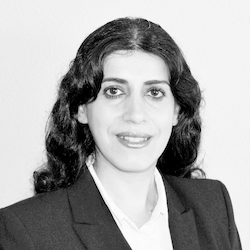Biomedical Data Analysis Research Laboratory
This lab performs research in developing signal processing and machine learning algorithms for various mental and neurological disorders, along with brain computer interface systems for assisting individuals who are suffering from the most severe motor disabilities.
LAB DIRECTOR

Dr. Mayam Ravan
- Profile
- Website
- mravan@nyit.edu
- New York City Campus: Edward Guiliano Global Center, Room 810
ACTIVE PROJECTS
Developing Machine Learning Algorithms to Predict Response to Antidepressant Treatments for Patients with Major Depressive Disorder
Currently there are more than 20 effective antidepressant medications (ADMs) but no useful biomarker to guide ADM selection. The inefficiency of current "best practice" methods leads to much potentially avoidable personal and family suffering, increased risk of suicide, workplace disability, and treatment cost. The discovery of an accurate and accessible biological predictor of treatment response would greatly improve the management of major depressive disorder (MDD) and would reduce the cost of treatment. In this project, in collaboration with the Department of Psychiatry and Behavioural Neurosciences at McMaster University, we plan to improve the management of MDD by developing MLAs to accurately predict response to sertraline, bupropion, and repetitive transcranial magnetic stimulation (rTMS), and advance our understanding of the "placebo effect". This is important because compared to placebo (or sham rTMS), the efficacy of ADMs and rTMS is statistically significant but clinically modest. This may due to an unrecognized biological effect of "placebo". Better understanding of the "placebo effect", through identification of pre-treatment factors predictive of placebo response, may provide useful insights for the development and testing of antidepressant treatments
Developing a Machine Learning Approach to Investigate the Brain Connectivity in Autistic Children and the Effect of Six Weeks' Physical and Cognitive Therapy (Supported by New York Tech's ISRC)
Autism spectrum disorder (ASD) is a complex and heterogeneous disorder and EEG has proven to be a powerful tool for studying this atypical and complex disorder. By representing brain function as a network, methods for the study of complex systems can be applied. Most of EEG based studies with ASD investigate the brain response to external stimulation such as auditory or visual evoked potentials, while resting-state EEG functional connectivity can identify abnormalities for which evoked potential studies cannot recognize. In this project, in collaboration with the Department of Occupational Therapy at New York Institute of Technology, we plan to develop a novel machine learning approach based on effective connectivity measures of resting EEG data to investigate the direction of information flow in the EEG of children with ASD and how it is changing after six weeks of physical and cognitive activities as treatment in comparison to healthy children. This work will help to understand the concept of ASD as a brain disorder with globally disrupted neuronal networks and abnormal functional connectivity, and how the brain network topology is modulated by treatment.
Developing a Robust Brain Source Localization Technique to Identify Seizure Onset
In recent years, BSL from continuous high-density scalp EEG data has received increased attention in clinical epileptology to identify seizure and spike origins and brain network dynamics. The information gained from source localization can serve as a powerful guide for surgical resection and closed-loop neuro-stimulation therapy. In this project, in collaboration with the Department of Neurology and Neurological Science at Stanford University, we plan to optimize our fast fully adaptive (FFA) algorithm that can handle limited stationary time samples and arbitrary mismatch between the assumed and true head model. This new approach will then be evaluated with simulation and measured EEG data and used for localizing the source of spikes and seizures in patients with refractory epilepsy
Developing Brain-Computer Interface Systems to Control Devices
The purpose of these projects is to allow people with disabilities to control a device such as wheelchair or robotic arm on their own without applying physical effort. This would help people who have neuromuscular diseases or injuries. These people are not capable of controlling devices by themselves because their muscles aren't strong enough or their limbs are simply not functional.
These projects allow the users to control devices solely by using the brain or face's muscles signals to manipulate actions using EEG headsets. The EEG headset is connected to the user's brain, which sends signals to a PC and ultimately controls a device for a specific purpose.